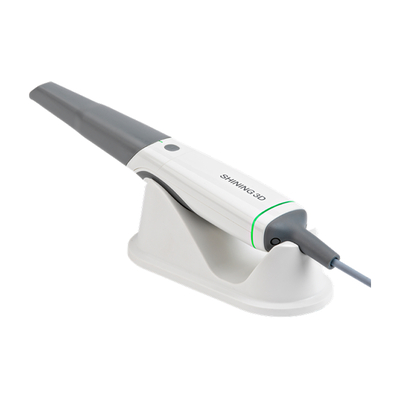An intraoral scanner is an innovative method for digital dental imaging, considered a replacement for traditional impression-taking. The advantages of these devices include eliminating the need for impression materials, reducing manual errors, providing an accurate display of teeth, and preventing discomfort in the patient’s mouth. Dentists can use this device to scan the patient’s mouth, avoiding the introduction of foreign substances and ensuring a more comfortable experience.
This device can be utilized in various dental procedures, including restorations, orthodontics, and implants.

3D dental scanners are advanced tools designed to capture highly accurate images of oral and dental structures. They leverage digital technology to enhance diagnostic processes, treatment planning, and the fabrication of dental prosthetics. These scanners serve as a modern alternative to traditional impression-taking methods, offering numerous advantages. Below, we explore the different types and key features of these scanners.
Types of 3D Dental Scanners
1. Intraoral Scanners
These scanners are placed directly inside the patient’s mouth to capture high-resolution 3D images of teeth and soft tissues. They are ideal for daily clinical use, such as detecting cavities, measuring orthodontic treatment progress, and designing prosthetics.
Examples: iTero Element, 3Shape TRIOS, Medit i700
2. Laboratory Scanners
These scanners are primarily used in dental laboratories to scan impressions, models, or other physical objects. They offer higher accuracy and are suitable for producing complex prosthetics and restorations.
Examples: Dental Wings DWOS, Straumann CARES
3. Hybrid Scanners
These scanners combine both intraoral and laboratory scanning capabilities in a single device. They are best suited for large and advanced clinics that aim to handle all treatment stages digitally, from diagnosis to final prosthetic fabrication.
Advantages of 3D Dental Scanners
- High Accuracy: Produces distortion-free, highly precise images of oral structures.
- Increased Patient Comfort: Eliminates the need for traditional impressions, reducing patient discomfort.
- Faster Process: Scanning is quicker than traditional impression-taking, with instant image capture and analysis.
- Improved Lab Communication: Digital files can be easily sent to laboratories, eliminating the need for physical impressions.
Software Integration with 3D Scanners
3D scanners are typically integrated with CAD (Computer-Aided Design) software, allowing dentists to visualize and analyze treatment plans after scanning. Advanced software solutions include 3Shape, Exocad, and Blue Sky Plan.
Applications of 3D Dental Scanners
- Orthodontics: Planning and fabricating clear aligners and teeth alignment.
- Implants: Precisely designing implant placement and evaluating surrounding tissues.
- Prosthetics: Creating crowns, bridges, and dentures.
- Dental Restorations: Planning restorations such as inlays and onlays.
The use of 3D dental scanners enhances precision, reduces costs, and improves patient experience, playing a crucial role in the evolution of digital dentistry.
